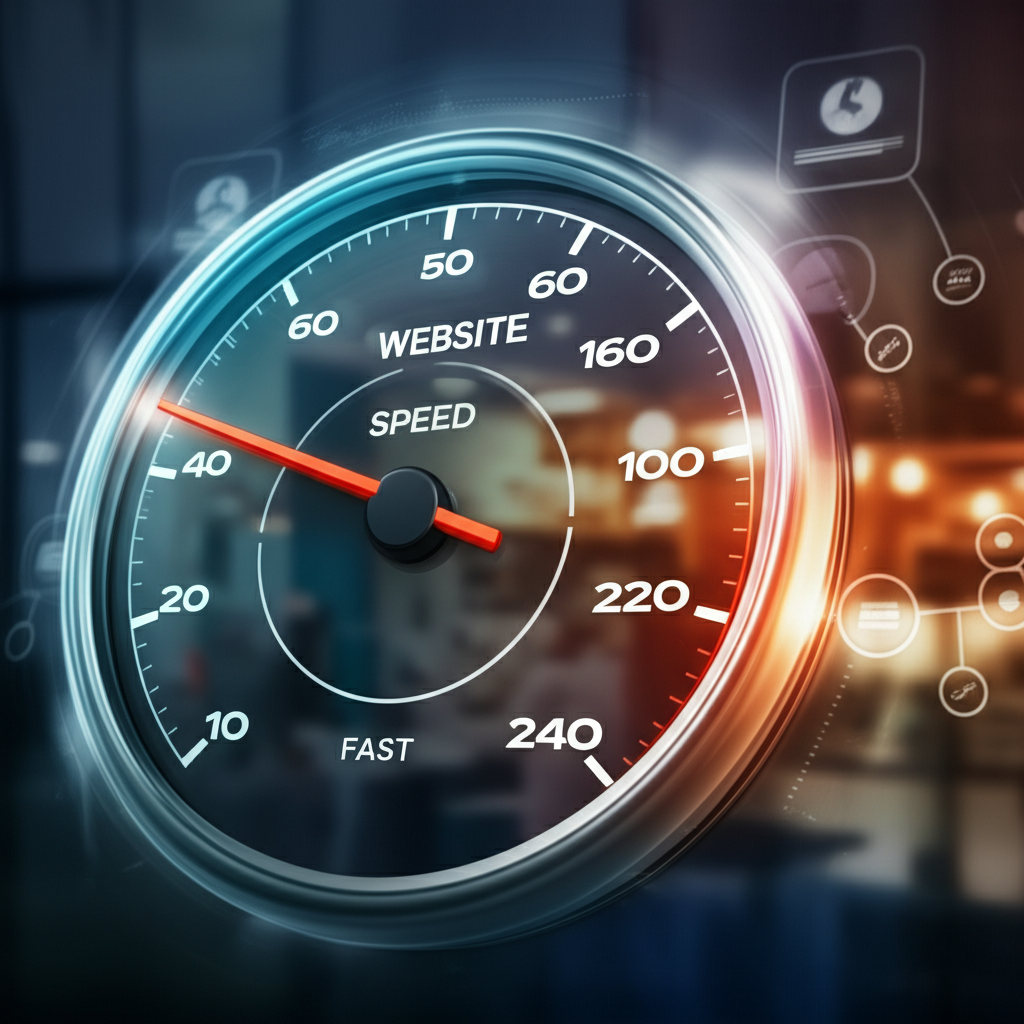- Why Website Speed Matters for SEO
- How Google Measures Website Speed
- The Impact of Website Speed on Sales
- User Experience and Bounce Rates
- Mobile Website Speed: A Critical Factor
- Strategies to Improve Website Speed for SEO & Sales
- Website Speed: An Ongoing Effort
Website Speed: Essential for SEO & Sales
Website speed is a crucial factor for both search engine optimization (SEO) and sales. In today’s fast-paced digital world, users expect websites to load quickly and efficiently. A slow website can lead to high bounce rates, lost conversions, and ultimately, damage to your bottom line. This article will delve into the importance of website speed, its impact on SEO and sales, and practical strategies to optimize your website for improved performance.
Why Website Speed Matters for SEO

Google has explicitly stated that page speed is a ranking factor for both desktop and mobile searches. This means that faster websites are more likely to rank higher in search engine results pages (SERPs). A slow website can negatively impact your search visibility, making it harder for potential customers to find you.
How Google Measures Website Speed
Google uses several metrics to assess website speed, including:
First Contentful Paint (FCP): Measures the time it takes for the browser to render the first piece of DOM content after a user navigates to your page. This could be text, an image, or any other visible element.
Largest Contentful Paint (LCP): Measures the render time of the largest image or text block visible within the viewport. A good LCP score ensures users perceive the page as loaded quickly.
First Input Delay (FID): Measures the time it takes for a browser to respond to a user’s first interaction, such as clicking a button or link. A low FID ensures a smooth and responsive user experience.
Cumulative Layout Shift (CLS): Measures the visual stability of a page. A high CLS indicates unexpected layout shifts, which can be frustrating for users.
Time to First Byte (TTFB): Measures the time it takes for a browser to receive the first byte of data from the server. A high TTFB can indicate server-side issues.
Optimizing these metrics is crucial for improving your website’s ranking in search results.
The Impact of Website Speed on Sales
Beyond SEO, website speed directly influences user experience and, consequently, sales. Studies have shown a strong correlation between page load time and conversion rates. Even a small delay of a few seconds can lead to a significant drop in conversions.
User Experience and Bounce Rates
A slow-loading website creates a frustrating user experience. Users are less likely to wait for a slow page to load and more likely to abandon it altogether, leading to high bounce rates. A high bounce rate signals to search engines that your site is not providing relevant content or a good user experience, further impacting your SEO.
Mobile Website Speed: A Critical Factor
With the increasing use of mobile devices for browsing, mobile website speed is paramount. Users on mobile networks often have limited data and slower connections, making a fast-loading mobile website even more critical. Google prioritizes mobile-first indexing, meaning it uses the mobile version of your website for ranking and indexing.
Strategies to Improve Website Speed for SEO & Sales
Optimizing your website speed requires a multi-faceted approach. Here are some effective strategies:
Optimize Images: Compress images without compromising quality. Use modern image formats like WebP, which offer better compression and quality than older formats like JPEG.
Leverage Browser Caching: Browser caching allows users’ browsers to store static assets, such as images and CSS files, locally. This reduces the number of requests made to the server, resulting in faster load times.
Minify CSS and JavaScript: Removing unnecessary characters and whitespace from your code can significantly reduce file sizes and improve download speeds.
Utilize a Content Delivery Network (CDN): CDNs store cached versions of your website on servers distributed globally, reducing latency and improving load times for users around the world.
Choose a Fast Hosting Provider: Your hosting provider plays a critical role in your website’s speed. Choose a provider that offers fast servers and reliable infrastructure.
Implement AMP (Accelerated Mobile Pages): AMP is a framework that creates stripped-down versions of web pages, optimized for speed on mobile devices.
Reduce HTTP Requests: Minimize the number of elements on your page, such as images, scripts, and stylesheets, to reduce the number of HTTP requests.
* Enable Gzip Compression: Gzip compression reduces the size of your website’s files, allowing them to be transferred faster.
Website Speed: An Ongoing Effort
Optimizing website speed is not a one-time task but an ongoing effort. Regularly monitor your website’s performance using tools like Google PageSpeed Insights and Lighthouse, and continually implement improvements to ensure your website remains fast and efficient. By prioritizing website speed, you not only improve your SEO and search rankings but also enhance user experience and ultimately drive more sales.











Leave a Reply